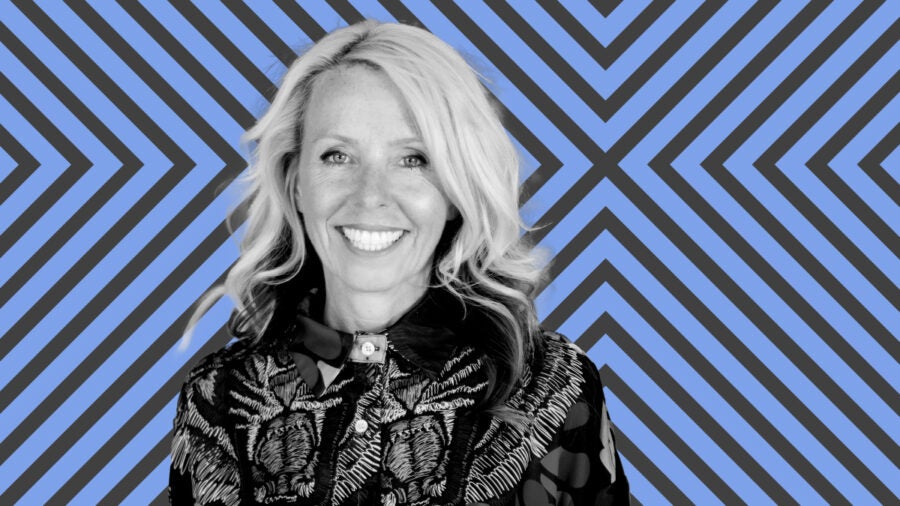
Pip Hulbert has just been involved in a business merger for the fifth time and, as such, is something of an expert in the process. In January, she became UK CEO of VML, a new global brand agency born from the merger of two WPP stalwarts, VMLY&R and Wunderman Thompson.
Hulbert’s career has followed the fortunes of these companies. For instance, she held the chief executive role at Wunderman before becoming CEO of Wunderman Thompson in 2019 following – you guessed it – a merger.
Getting your operations right is critical
Before all of this, Hulbert was chief operations officer at Wunderman, a role she believes prepared her for leading a business through the complexity of the M&A process.
The narrative has to be that we’re more than the sum of our parts
“It has been a huge help,” she says. “There are certain KPIs associated with operations and how you drive efficiencies, both in the business and for clients. I think it’s given me a good foundation for understanding, as you go through a merger, where you can gain some positive wins around how we’re operating.”
With the announcement of her role as CEO of VML, Hulbert’s first move was to gain as much data and insight as possible about the new organisation. Time is of the essence when merging two separate entities, as any delay creates opportunities for confusion and unease. Hulbert immediately wanted to understand what VML had in terms of talent and skills and make a plan so she could hit the ground running. “In the CEO role you have to evaluate the business through many different lenses, but you can’t afford to get the operations wrong,” she says. “Those have to be water-tight.”
Prioritise people and culture
Another business area that must be water-tight during a merger is culture. “Every CEO will come with a reputation and a culture from elsewhere,” Hulbert says. “Our natural instinct as humans is to be more cautious – people don’t like change – so quickly setting a new culture is super important.”
She notes that staff will often interpret mergers as inherently negative and become worried about their job security or major changes to their working lives. Hulbert’s philosophy on mergers is to view them as an opportunity to create something new and exciting rather than reinventing something that already existed. “I want everyone to enjoy the process,” she says. “The narrative has to be that we’re more than the sum of our parts, but finding those proof points and celebrating differences and successes is so important early on.”
But undergoing a merger in the post-Covid, hybrid-work era was a new challenge for Hulbert. VML’s workforce is not in the office five days a week, which Hulbert acknowledges has made certain elements of culture-building trickier. “I’ve noticed it’s taken longer for people to get to know each other,” she says.
So is the secret a five-day return-to-office mandate? No, she says: “There’s a definite awareness that we’re not going to be happy five days in. And it would seem unfair that we can’t have the best of all worlds – both physical togetherness and digital connection.” Instead, the key is to be more mindful about how time in the office is spent, prioritising collaborative meetings and building relationships between new colleagues and departments.
In her leadership team, Hulbert wants to maximise the efficiency of the time they spend together. “There are a lot of senior people at VML but I’m not one for everyone sitting in weekly meetings as a large crowd,” she says. Instead, she prefers to work with people one-on-one and make sure that every member of the team knows exactly what is expected of them, particularly in the early days.
“I’m very clear with people’s KPIs, how we’re measuring them, how we report back and how we connect that information across the business,” she says. “That’s how we’ve got to be to operate effectively through quick communication and decision-making.”
If in doubt, over-communicate
Quick, clear communication is key to a successful merger, according to Hulbert. After taking the reins of the new VML, she immediately embarked on what she calls a “road show”. This meant not only standing up and addressing the company in quarterly town halls but also regularly attending department meetings all across the agency.
“I go because I want that connectivity with people,” she says. “There’s an aligned story and if there are any questions I can help.” Hulbert advocates over-communicating, particularly in the first months following a merger. “You might not have all the answers but explaining the journey is very important.”
For VML this has not been straightforward. Hulbert describes her “Gwyneth Paltrow moment”, communicating with the business that they would be “consciously uncoupling” from the name Wunderman Thompson, a brand many had worked under for years. Not only that, but she had to communicate to the other business in the merger that they would be losing Young and Rubicam – the Y&R in VMLY&R. This required a skilful shift in messaging.
“I had stood in front of people for many years talking about how the brand, which no longer was, was at the forefront of our industry and making everybody feel really proud to be part of that,” she says. And this is particularly hard in the world of branding, where names have real power and heritage is immensely important. Hulbert’s approach was not to shy away from this difficulty.
“Rather than just moving on, we had a moment to collectively discuss it, to be authentic and honest, because it was a surprise and a shock for me as well,” she says. Hulbert wanted to take time to celebrate the legacies of all the brands involved before bringing her workforce together to create something new.
What leaders need for success post-merger
This attitude is part of what makes Hulbert a safe pair of hands post-merger. “I am a natural future-facing thinker,” she says. “And I challenge everyone to always be doing something different because otherwise, how will we evolve?”
Leaders taking their business through a merger would do well to follow suit. Hulbert describes herself as a “fixer” and someone who relishes a challenge. This, combined with her background in operations, means that she always approaches the creation of a new business with an open mind.
You won’t have all the answers but explaining the journey is important
“There are always going to be things that are unexpected – usually the things no one has warned you about in advance, that’s just the law of mergers,” she says. “But that doesn’t mean they can’t be overcome. It’s just about building as complete a picture as possible so you can make informed decisions.”
To balance her laser-focused approach, Hulbert wants to make sure that the early post-merger days are also infused with a sense of fun. “Everybody gets out of bed in the morning to do a good job, I totally believe that,” she says. “But sometimes you have to let off a bit of steam.” In her team, this means regular post-work dinners, sharing news from their personal lives and keeping a light-hearted tone, even in serious discussions. Most recently, her senior leadership team received a very formal Monday morning message about the critical business importance of securing Oasis tickets.
Ultimately, post-merger success all comes back to the importance of culture for Hulbert. “As a leader, you’ve got to be authentic and make sure it’s enjoyable,” she says. “A merger should be fun.”
7 tips for leaders facing a merger

Pip Hulbert has just been involved in a business merger for the fifth time and, as such, is something of an expert in the process. In January, she became UK CEO of VML, a new global brand agency born from the merger of two WPP stalwarts, VMLY&R and Wunderman Thompson.
Hulbert’s career has followed the fortunes of these companies. For instance, she held the chief executive role at Wunderman before becoming CEO of Wunderman Thompson in 2019 following – you guessed it – a merger.





